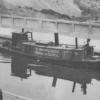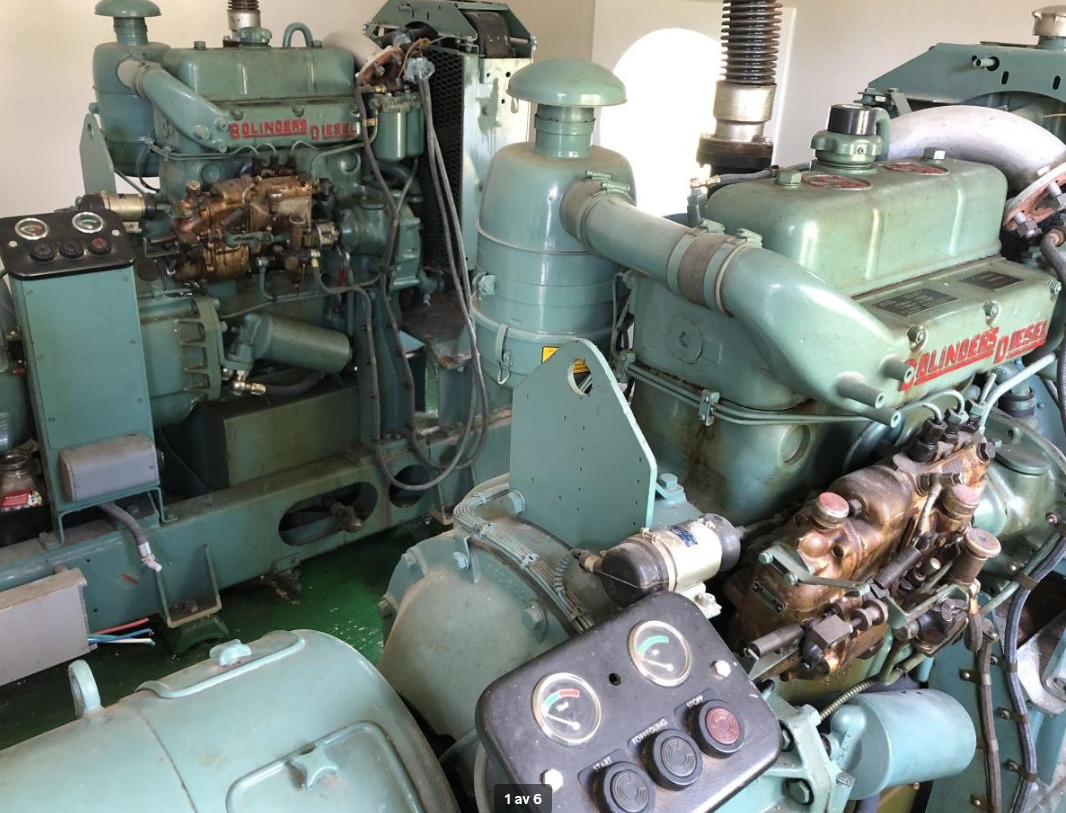-
Posts
818 -
Joined
-
Last visited
Content Type
Profiles
Forums
Events
Gallery
Blogs
Store
Everything posted by Mike Adams
-
Leaving the Wey on Friday. Anyone purchased a visitors licence from Shepperton recently or do I have to do it by post?
-
Quite a lot of Paddle boards on the Wey now. Trouble is they have no idea even on which side to pass you. They were occupying both landing stages below one lock we came to and when you approach they have no idea what to do. More concerning is the wild swimming on the Basingstoke, and with it being overgrown, narrow and shaded in places they can be difficult to spot. They don't realise they can be sucked under if you don't spot them in time.
-
Thanks. General opinion seems that it will be OK. I think I will avoid going very far at the weekends and Bank Holiday as usual.
-
Hi Last year we spent 2 weeks on the Thames during August and it was very quiet and passed though many locks on our own. Anyone know what it is like at the moment? Is it really busy and difficult to find moorings? Thanks
-
Was this 'boater' moored alongside or infront or behind? What exactly are the rules about mooring alongside someone else's boat? Seems to be common practise in London but do you have any rights to refuse? I assume you have no right to board someone else's property or block them in but then if you choose not to have a home mooring you just have to take the rough with the smooth.
-

Isuzu control panel acting weird
Mike Adams replied to canalboat77's topic in Boat Building & Maintenance
Where does this 15v come from? There is a voltmeter shown but as mentioned earlier you are not looking at it straight on so I recon it reads anywhere between 13.5 and 14. Anyway if it has two alternators which the panel suggests either one could trigger the alarm. -

Fitting second alternator to Isuzu 4LB33 engine
Mike Adams replied to JoshS's topic in Boat Building & Maintenance
No. What you have is fine but that switch shown can also be used as a battery isolating switch. -

Fitting second alternator to Isuzu 4LB33 engine
Mike Adams replied to JoshS's topic in Boat Building & Maintenance
Just take care when mounting the 2nd alternater. The brackets may be quite flimsey and some mount on the aluminium timing chain cover. It is not unknown for them to break off damaging the casting. You will still need a battery isolating switch if this is the only one. -

Isuzu control panel acting weird
Mike Adams replied to canalboat77's topic in Boat Building & Maintenance
Te OP post shows the engine at tickover. You have no way of knowing if the alternator is actually charging at that point. When the engine speeds up it may charge and probably does depending on the circumstances (such as a slipping belt). Your only indication is the warning lamp and the buzzer that are the same thing except the buzzer responds more quickly than the lamp to rapid changes in voltage. The alternator will cut out when a certain voltage is reached but you have no way of knowing that from the indicator lamp and it will not light up to say it has stopped charging. -

Isuzu control panel acting weird
Mike Adams replied to canalboat77's topic in Boat Building & Maintenance
The alarm does not measure the battery voltage but has a diode 'OR' logic circuit to the warning lamp on the alternator. It does not matter what the battery voltage is if the alternator drops out from charging at low speed or any speed due to slipping belt or failing alternator it could cause this effect. -

Isuzu control panel acting weird
Mike Adams replied to canalboat77's topic in Boat Building & Maintenance
Hi Do you mean the alarm buzzer is making a noise? Mine sometimes does this when the engine is first engaged in gear and the oil hot. The oil pressure falls slightly before the engine picks up. It is too quick to flash the warning lamp. The hours meter is random on mine sometimes it works sometimes it does not. The buzzer is more sensitive than the warning lamps so it could be low oil pressure or alternator not charging at tickover. -
Let's hope it s not been damaged by one of those widebeams with the vertical dropped skeg. Real cill destroyers!
-
I am sure you cope with it but your biggest problem is the mooring. If you do not keep a base on land then with all the costs that would bring then unless you buy a freehold mooring you have no security. It can get very cold in winter on a cheap boat as well. Depends on your personal financial circumstances.
-
The issue with bitumen I think is mainly around the waterline. Maybe it is worth seriously preping 3" either side of the waterline and trying this stuff on it. I have found that a couple of coats of a zinc based primer makes quite a difference to the rate of rusting at the waterline as the first diesel spill tends to wash it off with a bit of wind or flow on the water. I am sure nothing can bond to bitumen except more bitumen and its a pretty good release agent. 2 pack is great coating but only after proper shot blasting.
-
I would just solder the bare ends, given it is stranded wire, and join them in a connector block overlaying the cables. Anyway I have learnt something - that you can't get 9.5mm male connectors so I won't go looking for any!
- 25 replies
-
- electrical
- spares
-
(and 1 more)
Tagged with:
-
The only ones I have ever seen are non insulated to fit in block connectors but I hope someone will prove me wrong. You need a special crimp tool for these to make up loom connectors.
- 25 replies
-
- electrical
- spares
-
(and 1 more)
Tagged with:
-

Nice pair of Bolinders for sale on www.blockett.se
Mike Adams replied to Mike Adams's topic in Others
They don't look like they have done much work and would a nice trad engine. I think they want about £5k for both of them or £2.5K each but you would have to go and collect them. -

Mobile mechanic required near Coventry
Mike Adams replied to Bewildered's topic in Boat Building & Maintenance
You could try contacting Rose Narrowboats or Brinklow Boat services. They are quite close and may be able to help. -
That seems to prove my theory that the cable breaks in tension. If it fails it can be in one of three positions forward, neutral or reverse. No point in it failing in neutral because the same can be achieved by stopping the engine so I would rather have stuck in astern because you are likely to have more momentum going forward which is what you need to get rid in an emergency so I think I will change mine to pull from reverse. At the moment it is pull from forward. I accept all the points about taking due care and going slowly which is fine if you know what you are doing but if you don't have much experience if you go astern and nothing happens then you would tend to put on more power which if stuck in forward would aggravate the situation.(I am leading my pride and joy out to a member of the family hence the examination of all causes of possible problems!) It would be interesting to know what the normal arrangement is with hydraulic gearboxes.
-
Just out of interest does yours 'push' for forward or reverse?
-
At the moment the morse lever pushes the cable which in turn pushes the control valve into forward so when you pull it back it could stay in forward if it broke. Conversely if I reverse it all, which is not too difficult, by changing the hydraulic pipes around and altering the morse control set up the lever will push for reverse so if it failed it would stay in reverse. What is the 'normal' set up with a hydraulic gearbox? Does the cable normally push for reverse or not or does it not matter. I still think it would be better to fail stuck in reverse as you are likely to be moving much slower and hence have more control. The assumption throughout all this is that the cable will finaly fail in tension rather than compression but this is only based on the fact that the compressive strength of the cable would be more than the tensile strength.
-
My main concern is going into a lock, behind a Gin Plalace for example and the cable failing they would then go hard astern but in fact would be going fast forward. I guess I will need to train them up but outside a lock they can stop the engine and steer the boat and just use reverse to stop or avoid a collision.
-
Maybe 5A round pin
-
My boat, with a hydraulic drive, and the machinery placed at the bow has long morse cables(45') to the engine and hydraulic gear control lever. Now the gear control could be set up either way so that the cable pushes the control lever for forward or pulls for forward and the opposite for reverse. Over many years on various boats I have only had one morse cable fail and it did so by fracturing and breaking the inner core where it joins the solid threaded end. Thinking about my family borrowing the 62' boat for a trip on the Thames and their experience with things mechanical I was thinking of the best arrangement with the gear cable so that if it were to fail it would do so in reverse and not forward. My thoughts are that it is more likely to happen when the cable is in tension so that having it push into reverse and pull into forward would be better so that rather than the boat jamming in forward it would at least jam into reverse and far less likely to cause a problem in a lock for example. Other ideas are fitting a spring to reset to reverse if the cable fails. Any thoughts or experience of this potential problem would be welcome.



